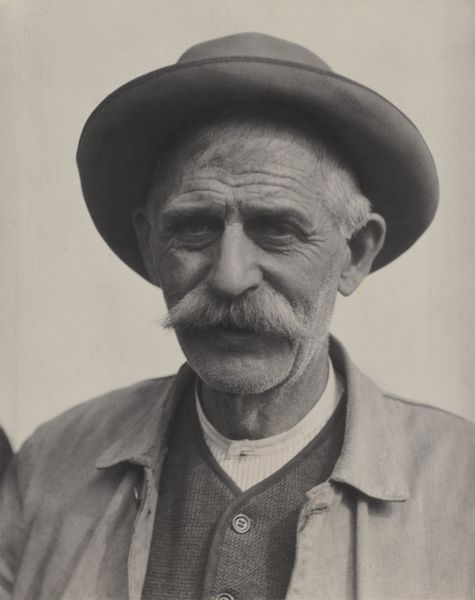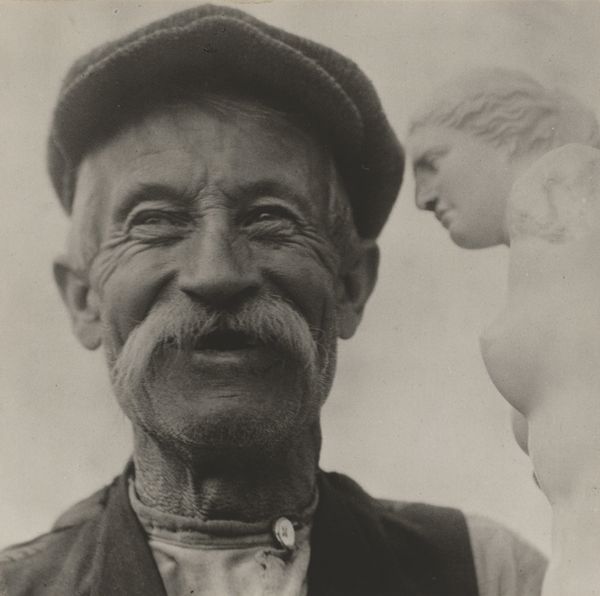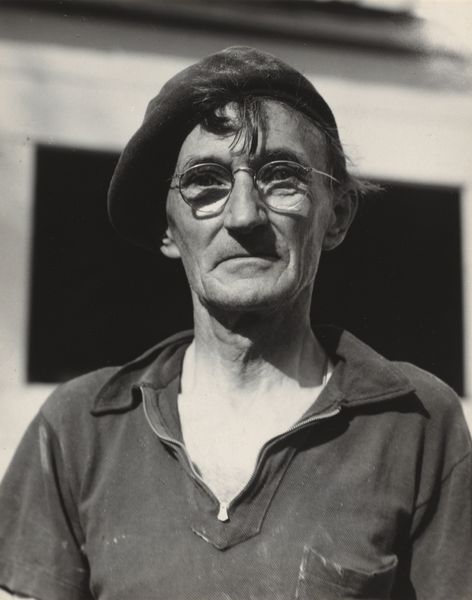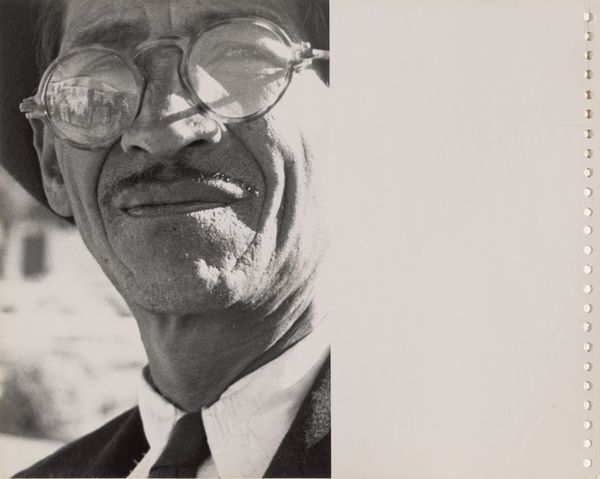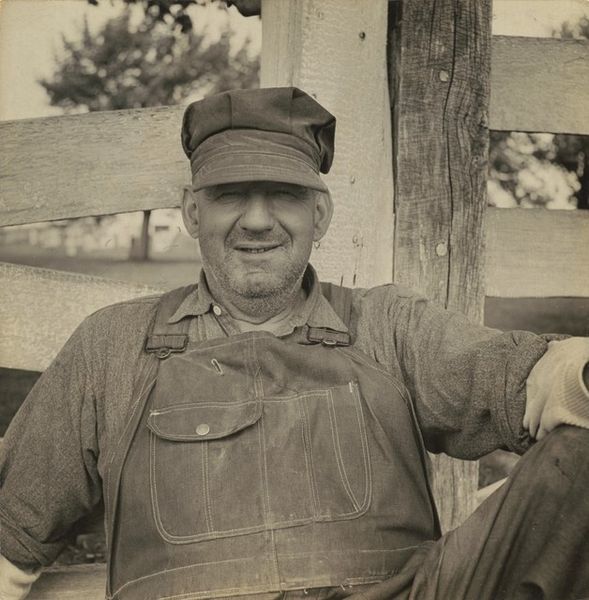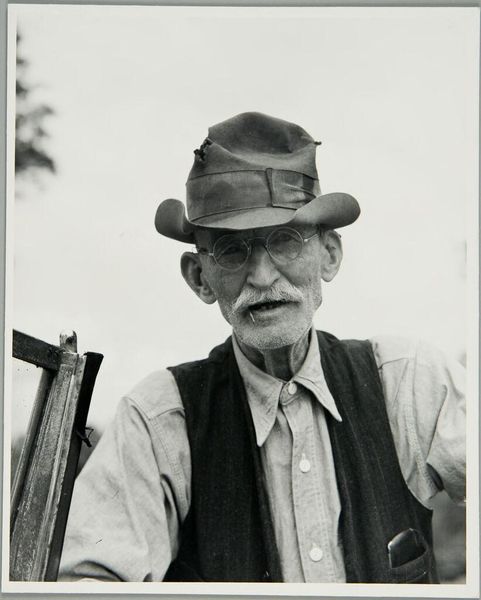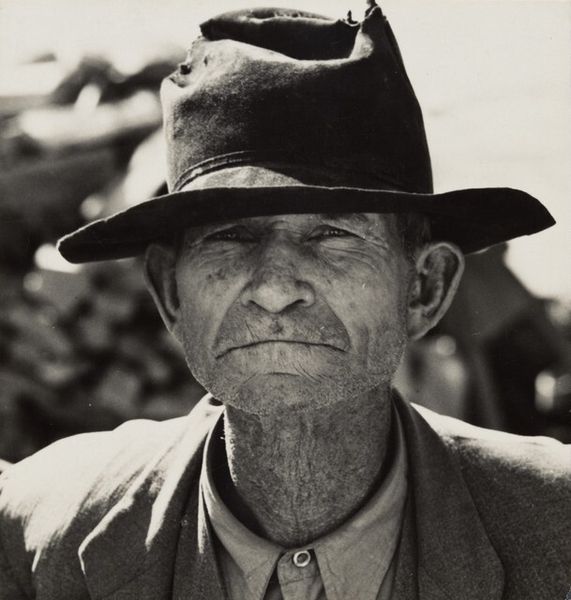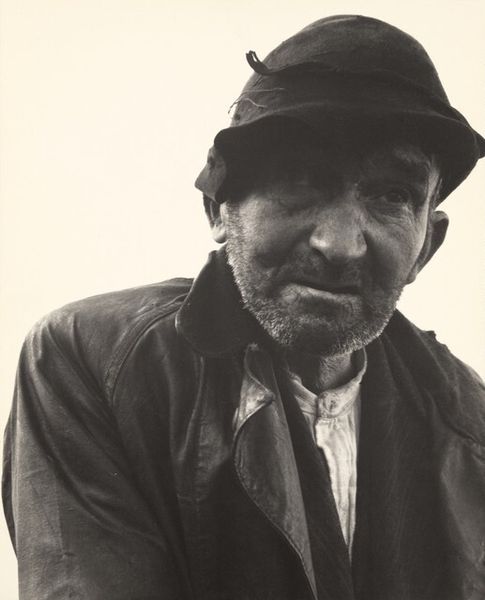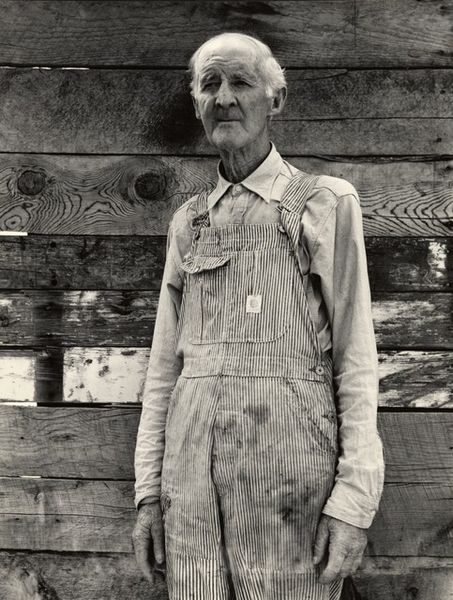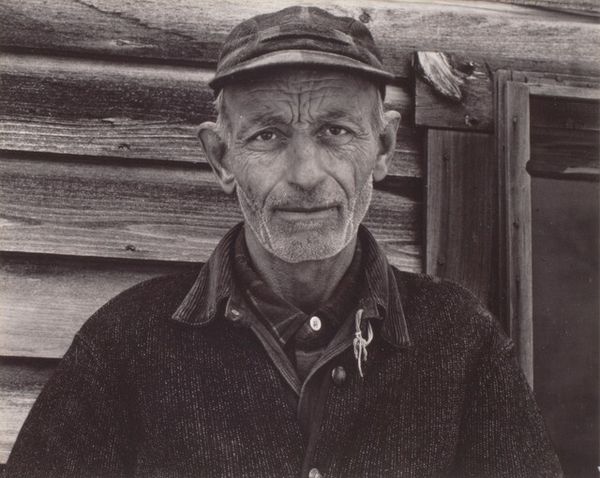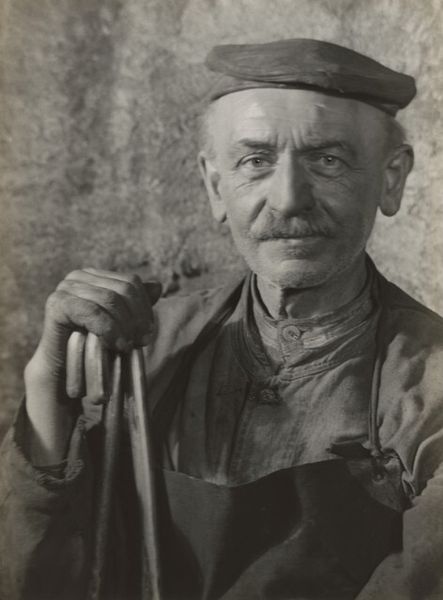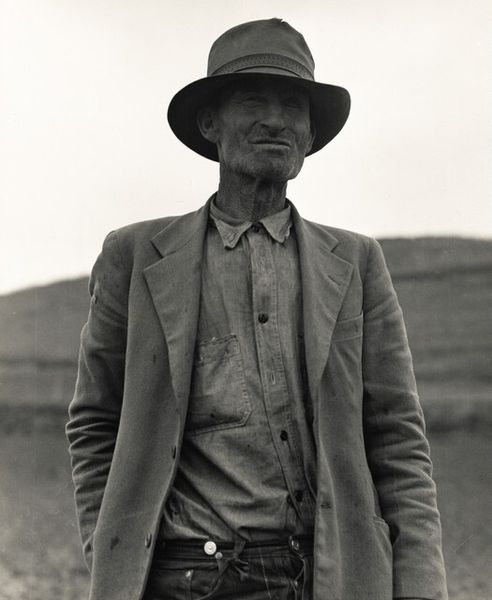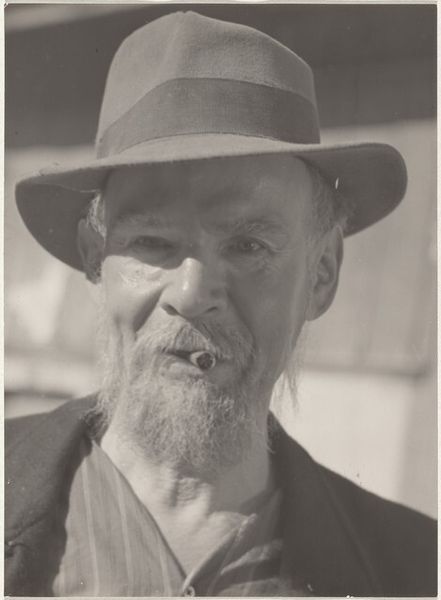
photography
#
portrait
#
pictorialism
#
photography
#
realism
Dimensions: sheet (trimmed to image): 10.4 × 7.8 cm (4 1/8 × 3 1/16 in.) mount: 34.2 × 26.4 cm (13 7/16 × 10 3/8 in.)
Copyright: National Gallery of Art: CC0 1.0
Curator: Let's turn our attention to Alfred Stieglitz's portrait from 1920, simply titled "Bly." It’s a gelatin silver print, exemplary of the Pictorialist and Realist movements he was so deeply involved in. Editor: The first thing that strikes me is the light. It’s harsh, unforgiving even, digging into the lines on his face and casting a heavy shadow under his cap. It's an image devoid of any romanticising tendencies; just a face, raw and present. Curator: Precisely. And who was "Bly"? We don’t know for sure, but Stieglitz often photographed everyday people. Placing the work into the broader context, we see it amidst the wave of modernism. This isn’t a member of the elite; this feels like a portrait of the working class, of a person too often made invisible. Consider what that implies regarding identity. Editor: Right, and what that visibility grants or takes away. I also think about the act of choosing to photograph someone like Bly at a time when artistic photography was just starting to be accepted in gallery settings. Do you see that framing—cropped so close? It almost demands that we consider labor, working class identities and bodies within the world of photographic imagery, too. Curator: Indeed. We can situate this portrait within larger narratives surrounding art's democratization and its capacity to challenge elitist perspectives within early twentieth-century society. Stieglitz wasn't just showcasing photographic skill; he was perhaps arguing for the dignity of those marginalized by power structures. Editor: It's fascinating how Stieglitz manages to capture both the vulnerability and the strength etched into this man’s face. I notice his clothing – simple button up shirt, plain cap, all of which point to a lack of embellishment. No airs about him. We have to wonder how the audiences back then felt looking at it, compared to now. Curator: Context is vital here. Think about the impact of viewing a work like this at the time of its creation, versus today. We now see echoes of movements championing equality and inclusivity – echoes stemming back to the early twentieth century. That context changes our entire interaction with Bly’s image. Editor: Absolutely, it shifts everything. It transforms the image from merely a portrait of an unknown man into a poignant reflection on societal power structures. It raises so many necessary and often painful questions that need addressing if progress can ever hope exist for humanity to enjoy fully. Curator: It makes you reflect upon whose stories we tell and whose stories remain untold, doesn’t it? Editor: Exactly. "Bly," beyond its artistic merit, serves as a stark reminder of that ongoing question.
Comments
No comments
Be the first to comment and join the conversation on the ultimate creative platform.
